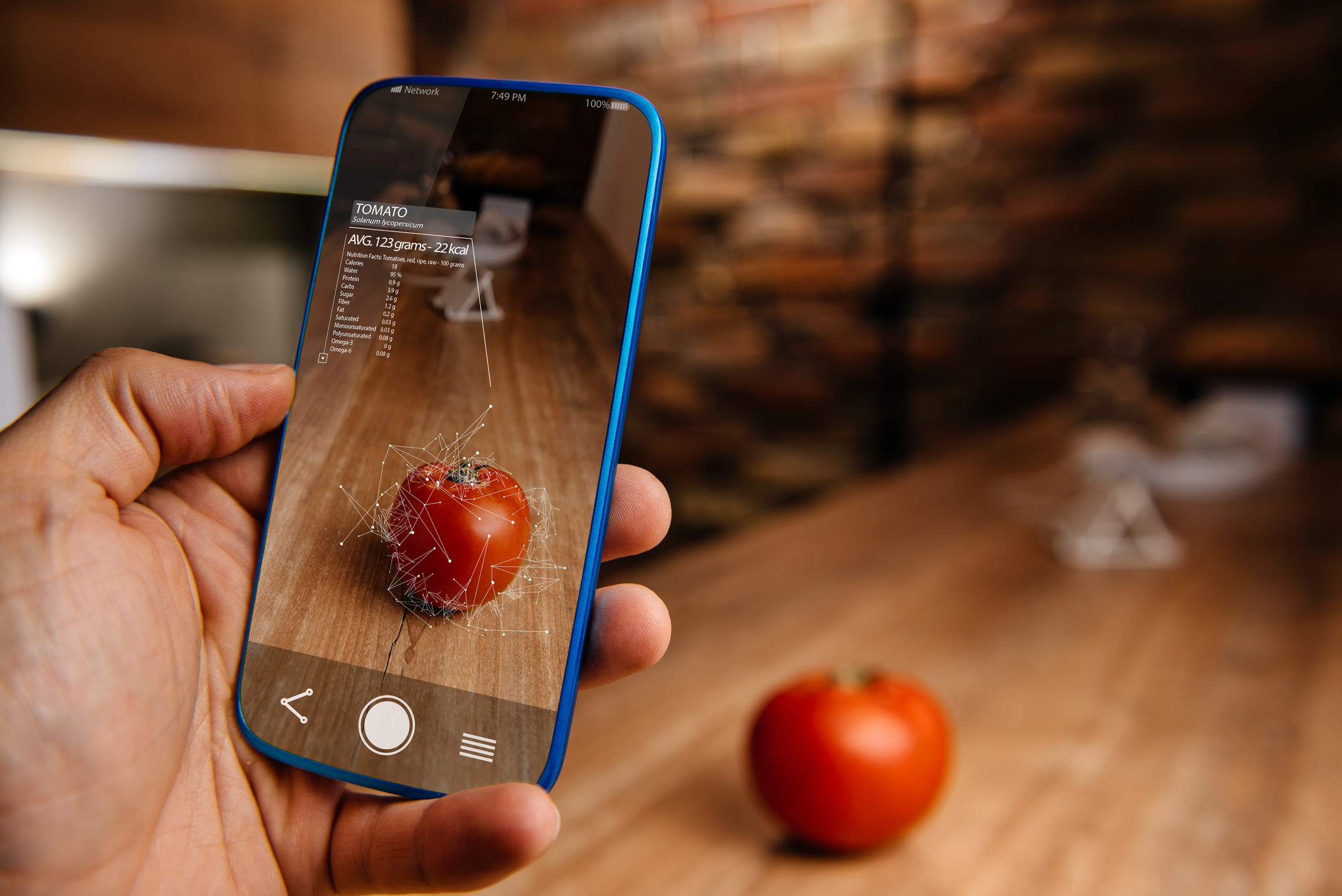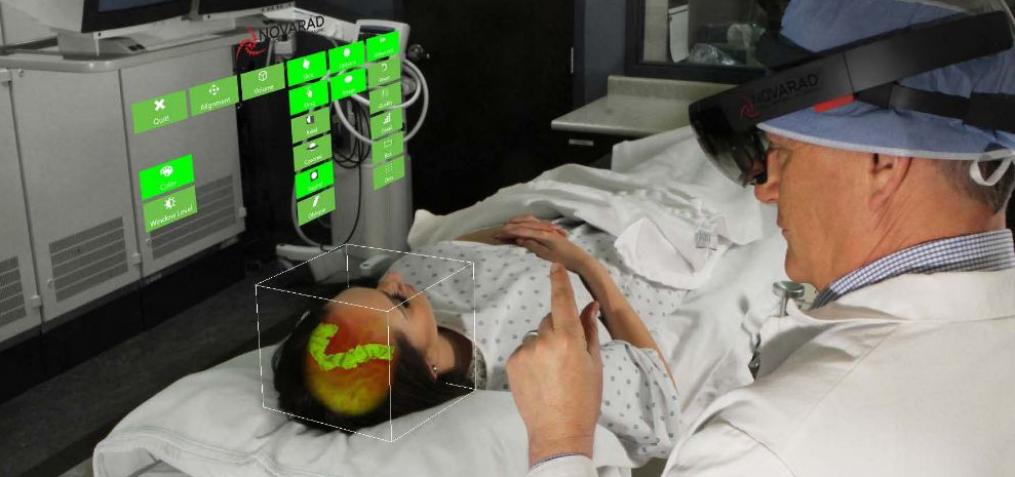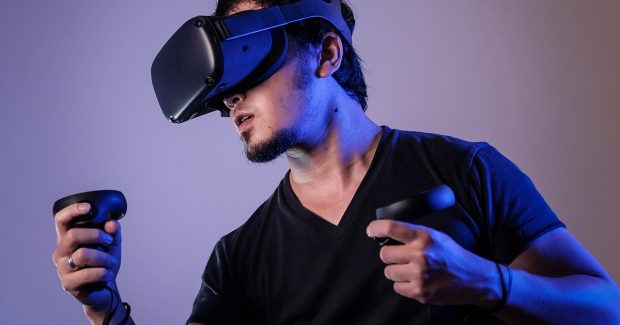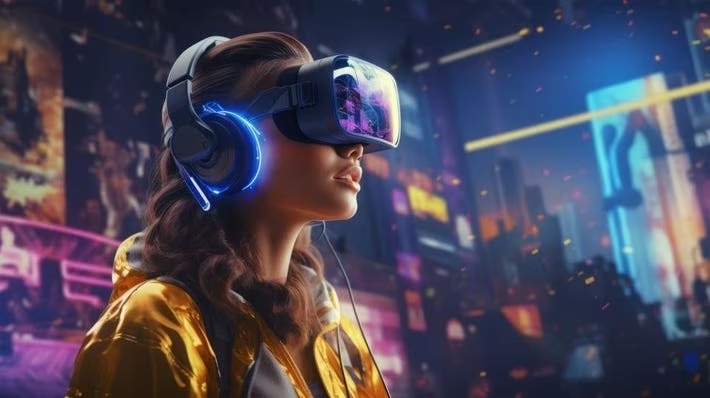Virtual reality seems to get all of the attention. But there’s another technology that’s just as captivating and perhaps more practical: augmented reality.
Unlike how virtual reality creates a new sensual environment, augmented reality (AR) uses digital tools to offer an interactive experience that is grounded in reality. This perspective helps. With users still partially in their realities — a hospital floor, shopping aisle or even Mars — augmented reality gives professionals practical training experience that’s not too far from the real world. AR has also started to provide consumers with an advanced, contextual look of a product even if the product is not there.
That’s why the future of augmented reality looks bright, even though it is sometimes viewed with less excitement than virtual reality. Maybe that’s because right now consumer-based virtual reality applications outnumber those for augmented reality, but it might not be long before consumers join working professionals in seeing the value of an augmented viewpoint.
Lucas Stephane, an assistant professor at the Human Centered Design Institute at Florida Institute of Technology, neatly summarizes the potential adoption of augmented reality by comparing it with how people view any new technology. “If it’s going to be useful, then I will use this stuff,” he said.
From Pokemon to Surgery
Virtual reality (VR) requires the complete use of equipment, either through goggles or a helmet, for users to fully immerse into the virtual experience. While augmented reality (AR) can involve the projection of images onto clear glasses, the more widely used form places an overlay of images or information — or both — over the live view that also appears on a smartphone or tablet. Because of its accessibility, AR is easier to use in work environments and often cheaper than VR.
VR gets a fair share of acclaim probably because it allows people to truly escape. If you haven’t yet worn a big VR headset that looks like a bit like a stripped-down welding helmet, you might have seen people in arcades or video game stores making wild gestures in the air. They’re deep into an imaginary world, possibly fighting medieval armies or flying a plane. VR is for more than just games, though. Industrial companies use VR-based training to show employees how to navigate occupational dangers without getting hurt. And militaries take advantage of the relative safety of a VR battlefield to give soldiers hands-on combat training.
AR has made headlines mostly through cultural appreciation. Who can forget the Pokemon Go craze of 2016? With Pokemon characters appearing over real images of streetscapes on smartphones, players walked city streets and actually walked off cliffs as they played the AR-based game. Snapchat filters are now all the rage, as app users benefit from AR trickery to make themselves look younger or become a virtual animal.
But augmented reality isn’t all about fun and games. It has also found a foothold as a training device in several professional fields: manufacturing, medical, military and education, to name a few. Not that organizations are dismissive of the benefits of VR, but they tend to like AR because it overlays internal information and other digital aspects over a real-world perspective, said Tim Bajarin, a technology consultant and analyst. Trainees are thus grounded in reality while enjoying the act of learning through augmented features. Right now, the AR market is a snapshot of many separate vertical niches — the industries that use the technology for training — but it largely lacks consumer use cases, he said.
Still, training applications have been a profitable endeavor for AR manufacturers. The applications revitalized traditional and often stale training methods. For example, in manufacturing, safety officers and technicians examine and repair equipment with the help of AR, Bajarin said. Training and instruction manuals are fed through the AR headset or electronic tablet, giving workers an augmented viewpoint of how a repair should proceed while they get to touch equipment. It’s a hands-on experience with a high-tech touch of virtual assistance.
Airline mechanics “used to have to bring out giant printed manuals and had to use a magnifying glass to see the print,” Bajarin said. That’s not exactly conducive to training, and many other mechanics in other fields can undoubtedly attest to balancing a printed material with actual repair work. Now, AR displays on the device the “expectations of what it will look like when you fix it and shows you how to fix it,” Bajarin added.
Doctors in training can’t consult manuals while operating, but they do need to practice surgery without harming a patient. The medical industry long had a work-around solution by having new doctors practice on cadavers. But, Bajarin said, fewer people are donating their bodies to science and doctors are having trouble finding cadavers.
The medical field might have found a solution, not just to overcome the lack of cadavers but to also give budding and experienced medical professionals a better sense of medical procedures while also providing in-the-moment data on patients. As outlined in Harvard Business Review, several universities are prototyping AR applications for medicine. They envision a surgeon someday seeing, for example, a hovering display of an echocardiogram with vital signs and data on the characteristics of a patient’s aneurysm directly above the surgical field. With an AR headset, the surgeon won’t have to look away from the patient to interpret the information.
Enhancing the Retail Experience
Consumer brands also have their eyes on integrating AR into the shopping experience, and some have already started to dabble with this new dimension.
Brent Leary, a customer relationship management consultant, remembers being impressed at this year’s Adobe Summit by a demonstration of an AR-supported shoe rack. It showed all shoes for a particular size and in all available colors and, when used in a store, would eliminate the “traditional back-and-forth of the salesperson running to the stockroom,” he said. AR will help brands convey information more quickly to consumers, enabling them to make faster decisions and thus not look to another brand, he added.
In 2017, the furniture retailer IKEA introduced an AR shopping experience on its mobile app, allowing a shopper to “see” a piece of furniture in their homes by holding out their smartphones. IKEA recently upgraded the feature and now fills up an entire virtual room with furniture.
Leary believes AR-enhanced support will take time to develop in retail, though. “Retailers will need to see what kind of phones customers have and see if it will be easy to leverage this stuff and be able to build it onto a customer’s technology,” he said. “Some of this stuff is way out there, maybe so far out that it yet can’t be achieved.”
Indeed, there are hurdles for AR to clear. Perhaps the biggest challenge for AR is that its data needs to be rendered in the moment so that information and images flow without lagging. “You’ll need to stream all of these types of content,” said Florida Institute of Technology’s Stephane. “The larger the content, the better the communication link needs to be, whether it will be 5G or enhanced bandwidth.”
Also, Bajarin contends consumers won’t want to deal with the high cost or “geeky” appearance of bulky AR headgear that mirrors those that support VR. It will most likely be a simple set of eyeglasses, with a smartphone as the support base, that delivers more advanced consumer-based AR applications, he said. AR for training, however, should continue apace because workers are “more than willing to use goggles that make you look like a geek,” Bajarin said. Form apparently trumps fashion when it’s related to work.
Another Technology to Embrace
Stephane has high hopes for the future of augmented reality. He believes that if the technology improves, AR will become an accepted part of life and work. He would know; he’s a researcher for a NASA Florida Space Grant Consortium project that aims to use AR to continuously monitor astronauts’ health while in space. The idea is to visualize the information taken from biosensors on astronauts so that mission leaders can easily observe health data in real time.
AR and VR have stirred occasional debate about whether leaving reality for something that’s not entirely real could lead to unknown psychological and social consequences. Quoting the Canadian philosopher Marshall McLuhan, Stephane believes the “medium is the message,” meaning how information is relayed is more important than the information itself.
“When computers came, there were all of these debates about learning with people saying computers are not good for education and that we need to stay with books. But books went digital and now there’s online education,” Stephane said. “Every new technology enhances what we already have.”
Are you interested in all things related to VR and AR? We are, too. Check out Northrop Grumman career opportunities to see how you can participate in this fascinating time of discovery.
Quelle:
https://now.northropgrumman.com/the-future-of-augmented-reality-blends-virtual-with-real-life-perspectives?utm_content=108590367&utm_medium=social&utm_source=linkedin&hss_channel=lis-E2lxUkMEOG




